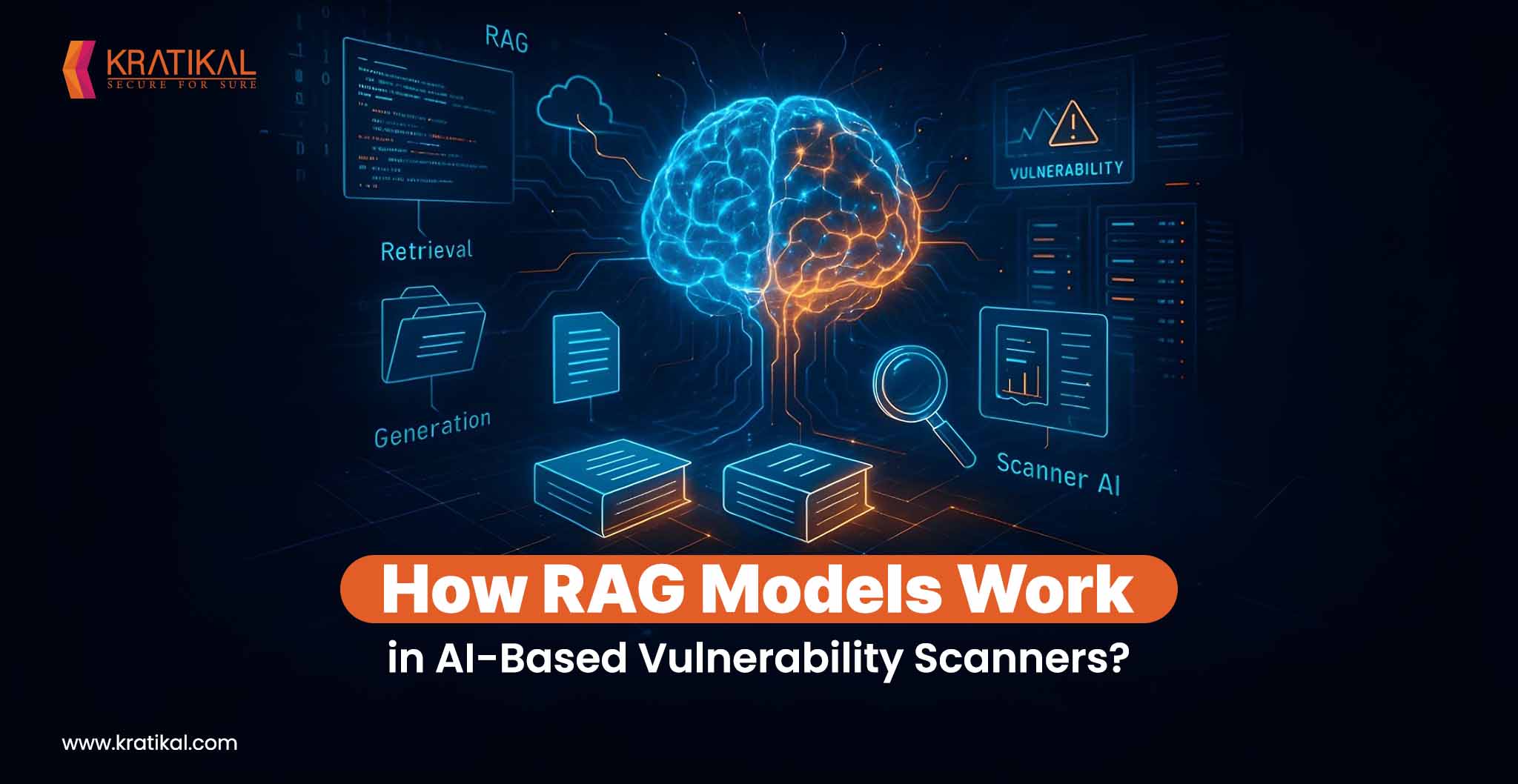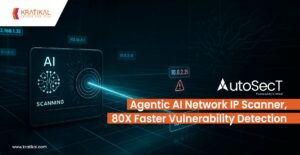AI-powered vulnerability scanners are increasingly using Retrieval-Augmented Generation (RAG) models to improve the detection of security issues in infrastructure. RAG is a technique that combines large language models (LLMs) with external knowledge sources, enabling an AI to retrieve up-to-date, domain-specific information and utilize it to generate more accurate and context-aware results. In the cybersecurity domain, this means an AI scanner can reference the latest vulnerability databases, configuration guides, or threat intelligence while analyzing inventory, rather than relying solely on its static training data. This blog offers a comprehensive overview of how RAG architectures function and their application in vulnerability management. We will cover the general RAG workflow, applications in cybersecurity, real-world tools and research efforts, benefits for detection and remediation, and other implementation details
Table of Contents
- 1 Book Your Free Cybersecurity Consultation Today!
- 2 Get in!
Overview of Retrieval-Augmented Generation (RAG) Architecture
Fig: Simplified RAG workflow.
Demonstration: A user query triggers a Retriever component to fetch relevant context (e.g., documents, data) from a vector database of knowledge. The query plus retrieved knowledge is then passed to a Large Language Model (LLM), which generates a response. This architecture augments the LLM’s generation with up-to-date, external information, rather than relying only on the LLM’s static training memory.
RAG Architecture Basics – Meaning and Key Components
RAG is an AI design pattern where a generative model is augmented with a retrieval mechanism that fetches supplemental knowledge from an external source before generating outputs. In practice, a RAG system has several key components and steps:
Knowledge Source:
A collection of documents, databases, or other data forming a knowledge base on the domain of interest (for example, a repository of vulnerability descriptions, threat reports, configuration files, etc. This serves as the authoritative information that the LLM can draw from beyond its trained knowledge.
Indexer & Vector Store
The knowledge source is pre-processed by generating vector embeddings for each document or piece of information. Embeddings are numerical representations of textual content that capture semantic meaning. These vectors are stored in a vector database (or index) optimized for similarity search. The indexing process often involves chunking documents into passages (to fit LLM context windows) and computing embeddings for each chunk.
Retriever
When a query comes in (e.g., “Scan this system configuration for vulnerabilities” or “Is this code snippet secure?”), the system creates an embedding for the query and uses it to perform a similarity search in the vector database. The retriever finds the most relevant pieces of knowledge (e.g., known vulnerability patterns, CVE details, best practice guidelines) related to the query. It effectively acts like a smart search engine that understands semantic context, not just keywords.
Prompt Augmentation
The retrieved information (typically a few top-ranked documents or snippets) is then combined with the original query to form an augmented prompt for the LLM. Prompt engineering techniques ensure the external knowledge is presented in a way the model can use, for instance, by appending the texts as reference context and instructing the model to ground its answer in that information.
Generation (LLM)
The LLM receives the augmented prompt (original question + retrieved context) and generates a response that takes into account both its inherent knowledge and the provided external data. In the vulnerability scanning scenario, this might be a description of a detected vulnerability, an assessment of risk, or a set of recommended remediation steps, enriched with factual details from the knowledge base.
Output
Finally, the system returns the response to the user or uses it in an automated workflow. Some RAG implementations also include a mechanism to cite sources or provide the retrieved references for transparency, which can increase user trust in the results.
Book Your Free Cybersecurity Consultation Today!
Applying RAG to Cybersecurity and Vulnerability Management
- Real-Time Threat Intelligence Integration: RAG enables AI scanners to pull in the latest CVEs, CWE descriptions, and exploit data during analysis, ensuring up-to-date vulnerability detection, even for threats discovered after the LLM’s training.
- Enhanced Vulnerability Recognition: When a scanner identifies a software version or open port, RAG retrieves relevant security data to assess if it matches known vulnerabilities, addressing the limitations of static LLMs.
- Improved Detection in Code and Configs: RAG allows AI to compare source code or configuration settings against known vulnerability patterns, improving the accuracy of config audits.
- Broader and Deeper Security Coverage: By merging real-time retrieval with AI reasoning, RAG-powered tools identify both common and niche vulnerabilities with greater precision.
One Example of RAG-Enabled Vulnerability Scanner for Network- AutoSecT by Kratikal
AutoSecT is the world’s first RAG-enhanced, AI-agentic vulnerability scanner for networks designed to eliminate false positives and deliver AI-validated results with precision. It sets a new benchmark in network security by combining intelligent IP and MAC-level scanning with real-time exploit validation. AutoSecT uncovers misconfigurations, exposed services, and critical vulnerabilities with unmatched depth and accuracy.
Benefits of RAG for Vulnerability Scanning and Remediation
Using Retrieval-Augmented Generation in vulnerability scanning brings several compelling benefits for both detecting issues and guiding their remediation:
- Up-to-Date Coverage of Emerging Threats: Perhaps the most crucial benefit is that RAG-equipped scanners can stay current with the latest vulnerabilities and attack techniques. Traditional vulnerability scanners or LLMs alone might miss zero-days or recently disclosed CVEs because their logic or training data is outdated. RAG solves this by allowing the system to pull in information on new vulnerabilities on the fly. For example, if a new critical flaw in OpenSSL is published, a RAG-based scanner can retrieve the details of that flaw from a trusted source and immediately apply that knowledge when scanning systems, no needing to wait for a model retraining or a signature update.
- Improved Detection Accuracy and Depth: By enriching an LLM’s input with relevant context, RAG often leads to more accurate identification of vulnerabilities and fewer false positives/negatives. RAG can supply knowledge on niche or platform-specific issues that the base model might not “know” about. For infrastructure scanning, one can include knowledge bases for various domains, and the retriever will surface whichever is relevant to the query. The result is a scanner that has a wide-ranging awareness, far beyond a fixed set of rules.
Studies have found that LLMs with retrieval tend to have higher factual accuracy and reduced hallucination, directly translating to more reliable vulnerability assessments.
- Contextual Explanations and Remediation Guidance: A major advantage of RAG in this domain is the ability to provide rich explanations and fix recommendations alongside detection. When an issue is found, a RAG-based system can retrieve the official CVE description, CWE details, or internal wiki entry about that issue, and use it to explain what the vulnerability means and how to remediate it. Such responses combine detection with actionable advice drawn from knowledge bases. This is immensely useful for security engineers and developers, as it saves time researching the issue and increases confidence in the findings.
- Faster Analysis and Decision-Making: By automating the lookup of relevant information, RAG can dramatically speed up the analysis process. Security analysts typically spend a lot of time correlating data from scanners with external references (like checking what a CVE actually entails, or looking up how to mitigate a finding). A RAG-enabled scanner does that correlation automatically in seconds. This enables near real-time insights. For instance, after a network scan, an AI could immediately prioritize the findings by retrieving severity ratings and exploit availability for each CVE, then output a ranked list with reasoning. Decision-makers get a concise, informed report without waiting for a human to compile it.
Get in!
Join our weekly newsletter and stay updated
Takeaway
Retrieval-Augmented Generation (RAG) is reshaping vulnerability scanning by combining the reasoning of AI with real-time, curated security data. This hybrid approach enhances detection accuracy, reduces false positives, and offers clear, contextual explanations backed by sources. For CISOs and security managers, RAG provides up-to-date risk visibility and faster decision-making. For engineers, it automates research, suggests fixes, and handles complex queries across domains. Ultimately, RAG enables AI tools to act as intelligent advisors- scanning, explaining, and guiding security teams in real time. This synergy between retrieval and generation marks a pivotal shift in cyber defense, moving toward faster, smarter, and more adaptive vulnerability management in today’s dynamic threat landscape.
FAQs
- What is Retrieval-Augmented Generation (RAG) in AI vulnerability scanners?
RAG combines large language models (LLMs) with real-time access to external security knowledge, like CVE databases and threat intelligence. This allows AI-powered vulnerability scanners like AutoSecT to deliver up-to-date, accurate, and context-aware results, even detecting emerging threats missed by traditional tools.
- How does RAG improve vulnerability detection and remediation?
RAG enhances vulnerability detection by retrieving relevant, real-time data during analysis. This reduces false positives, identifies niche issues, and provides actionable remediation guidance with sourced explanations, helping security teams respond faster and with greater confidence.
- Why is RAG important for modern cybersecurity tools?
RAG enables AI-based cybersecurity tools to stay current with evolving threats, automate complex analysis, and support real-time decision-making. Its ability to combine AI reasoning with live security knowledge makes it essential for accurate and adaptive vulnerability management.








Leave a comment
Your email address will not be published. Required fields are marked *